Federal Regulators Waited 7 Months to Investigate a Deadly Home Explosion Above a Gassy Coal Mine. Residents Want Action
Undermined: Tenth in a series about the impacts of longwall mining in Alabama.
OAK GROVE, Ala.—Mining for coal under homes can make land sink and settle, exactly what residents of this small community say has been happening all year. Homes are cracking apart, they warn. One blew up in March, killing its owner after methane gas seeped up through newly created rock fissures, a lawsuit claims.
Through it all, worried residents keep asking a fundamental question: How can an activity undercutting the land on which their homes sit be allowed?
The answer: It’s written into federal law.
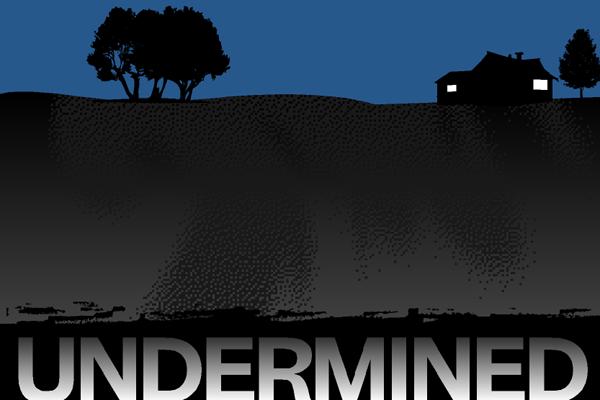
That’s part of a long history of rules that benefit mining companies rather than the Americans whose lives they disrupt. But the law does instruct regulators to act when there is imminent danger—and they’re falling down on the job, an Inside Climate News investigation found.
The Surface Mining Control and Reclamation Act (SMCRA) calls for companies to minimize mining damage from land subsidence, compensate affected property owners and replace lost water sources. But the federal agency that oversees SMCRA, the Office of Surface Mining Reclamation and Enforcement (OSMRE), routinely downplays its authority and fails to step in when problems mount, frustrating coalfield residents from Pennsylvania to Montana.
The law has allowed 24 states to be the primary coal mine regulators in their jurisdictions. That includes Alabama, which has taken no significant enforcement action against the mine in Oak Grove since the March home explosion and waited nearly six months after the blast to hold a public meeting about it with rattled neighbors.
An investigation into the cause of the blast by the Alabama Fire Marshal’s Office was inconclusive. But experts have said, and OSMRE documents describe, how methane migrates upward through disturbed rock atop an underground mine. A lawsuit by the family of the man who died in the March explosion alleges that by capping a water well on the property, the mine operator limited where the flammable gas could go and pushed it through new cracks and crevices to the surface. The Oak Grove Mine is one of the gassiest in the country.
Explore the latest news about what’s at stake for the climate during this election season.
Representatives of Crimson Oak Grove Resources, which operates the mine, did not respond to requests for comment for this story. The company’s lawyers have denied liability for the explosion.
Inside Climate News found little evidence that OSMRE has used its oversight authority to ensure that states minimize damage from subsidence caused by active mines, protect people living atop mines from methane migration or make certain that compensation provisions are handled fairly.
Nationally, records for 2019 to mid-2024 released after a Freedom of Information Act request show the federal agency rarely intervening with a state through its process known as a “ten-day notice,” an option that can trigger formal federal inspections.
Even with the law’s limitations, a former director of OSMRE said that SMCRA is strong enough to protect the people of Oak Grove—if only regulators were willing to act.
Joe Pizarchik, a Pennsylvania attorney with decades of experience, ran the agency through both terms of the Obama administration. He cited rarely used provisions of SMCRA that say “the regulatory agency shall” halt underground coal mining in cities, towns or communities if officials conclude there is an “imminent danger.”
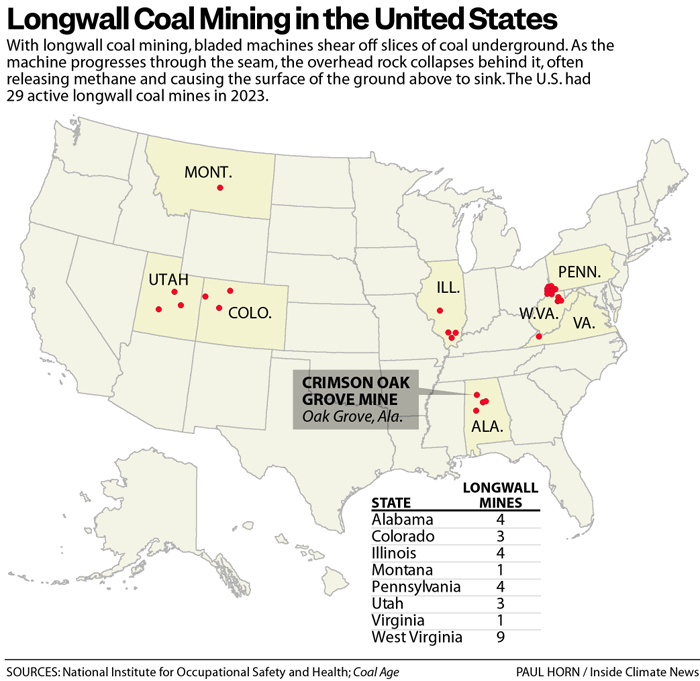
In the case of Oak Grove, Pizarchik said, if the Alabama Surface Mining Commission fails to act, then OSMRE can and should do so.
“They should be able to conclude that blowing up people’s homes and killing them is an imminent hazard, and they should be able to suspend underground coal mining beneath those areas,” he said. “It appears we have a documented example of the regulator’s failure to fulfill their mandatory duty to protect the health and safety of the public.”
Pizarchik’s conclusions are similar to those written in an OSMRE technical manual dated September 2001, eight months after President George W. Bush took office, on how to mitigate methane migration. The preface was written by Glenda Owens, a longtime senior manager at the agency and its current deputy director.
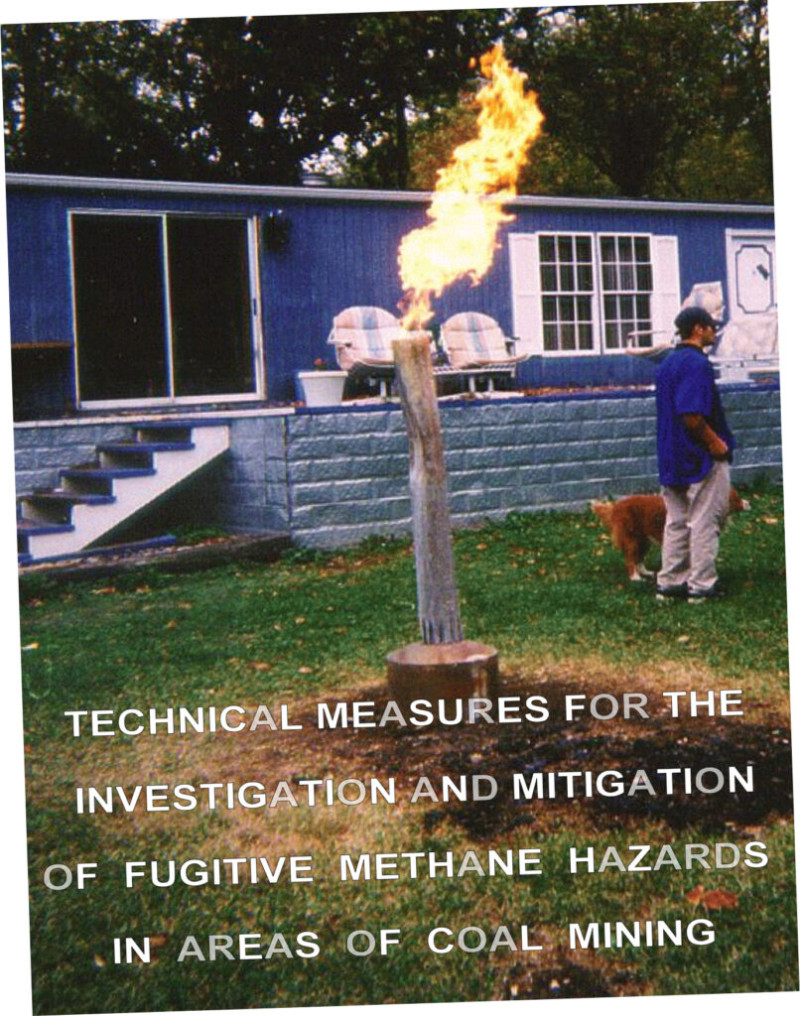
“Methane at explosive levels is an imminent danger,” she wrote. “Thus, when methane related to active coal mining causes an imminent harm situation, [OSMRE] or the State regulatory authority has the responsibility to act.”
Alabama Surface Mining Commission Director Kathy Love, by contrast, has suggested that methane migration from coal mines falls within a “black hole,” with no agency squarely responsible for mitigating risks, even to occupied dwellings.
Typically, when a state agency fails to follow a federal law, that’s an invitation for intervention from a federal agency. But some states—including Alabama—have recently argued in court that SMCRA gave them all but exclusive jurisdiction over the regulation of mining. Pizarchick dismisses that as a misguided “states’ rights” argument.
“States’ rights,” he said, “is a euphemism for not following federal law or protecting people’s normal rights.”
Inside Climate News has repeatedly asked to interview OSMRE experts since the Alabama home explosion in March. The agency has declined on every occasion and said the regulatory responsibility for surface and underground mining lies with the state.
In a late September email, agency spokesperson Judith Lavoie finally acknowledged that the federal agency could intervene. But she put the burden on local residents to start that process, saying, “OSMRE hasn’t received a complaint from citizens in Alabama on the fire or subsidence”—a claim at least one resident has disputed.
“They should be able to conclude that blowing up people’s homes and killing them is an imminent hazard.”
— Joe Pizarchik, former federal mine regulator
On Oct. 24, OSMRE reversed course when asked for a reaction to Pizarchik’s assessment.
In an email, Francis Piccoli, OSMRE chief of communications, wrote that the agency has been “monitoring” the Oak Grove situation and had now decided on its own to conduct a federal inspection. Piccoli wrote that the inspection would be “in collaboration with the state of Alabama, the mine operator and the community to ensure the safety of the residents living in and near the Oak Grove/Adger area and to evaluate whether underground mining was a contributing factor in this tragic event.”
That confirmation came seven-and-a-half months after the explosion that killed W.M. Griffice, 78.
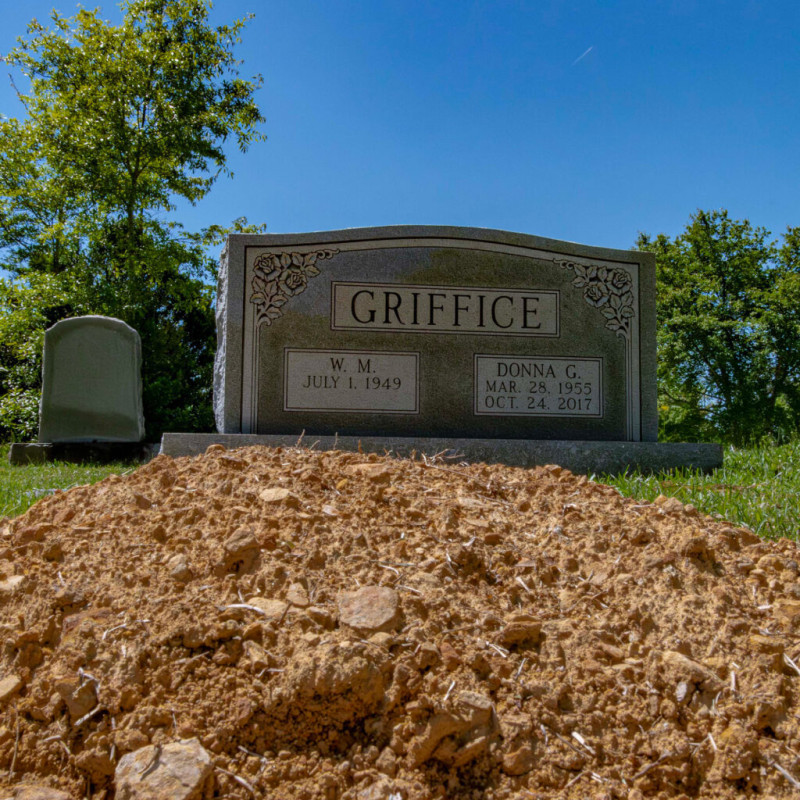
Legal Scholar: Mining Companies Have the Upper Hand
Griffice had been uneasy for days after representatives from Crimson Oak Grove Resources—due to begin mining under his home in February—found methane gas in his water well and capped it, his family said. Loud booms began shaking the ground. He feared his home might explode.
On March 8, it did. The blast destroyed the home, badly injured his grandson and sent Griffice to the hospital with injuries that killed him 26 days later. In the following months, residents of this community of about 500 people some 40 miles outside Birmingham said that they too are worried about the risk of methane from the mine moving up into their homes. Some say their homes are cracking apart as the land under them subsides.
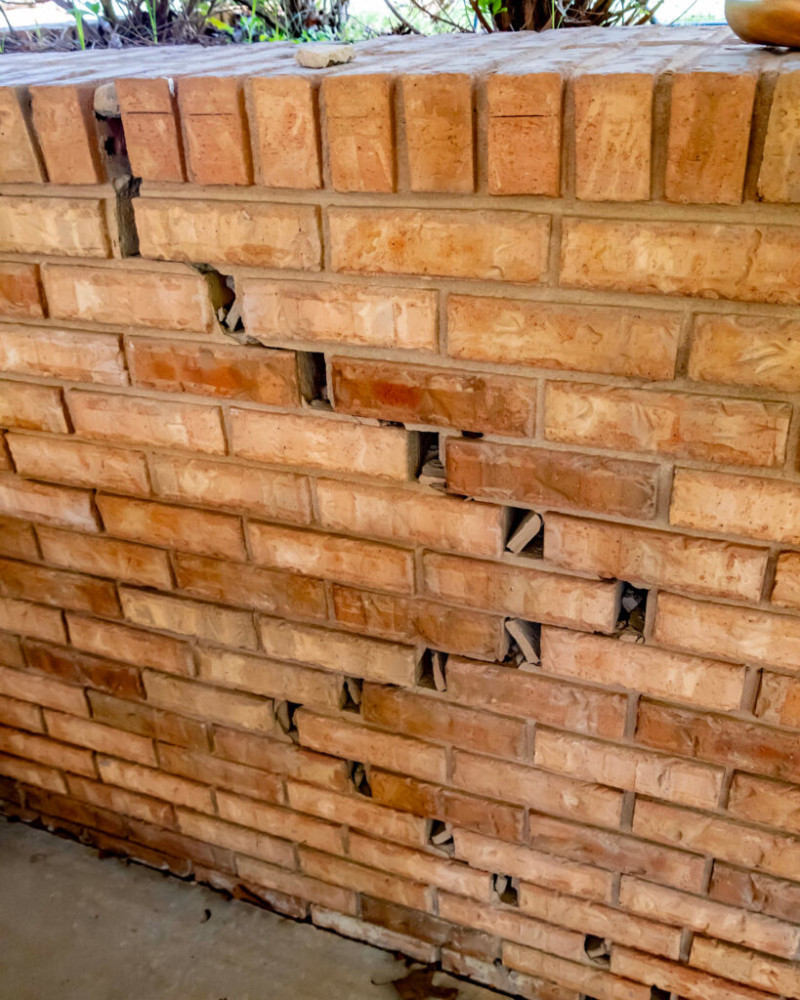
In interviews and testimony at the only public meeting since the explosion, residents have pleaded for help as they have learned more about what is happening beneath them. Hundreds of feet underground, miners operating massive machinery are chewing through buried coal seams and then allowing the ceiling of the new cavern to collapse behind them, causing the land above it to sink.
Miners traditionally would carve out “rooms” in coal seams, leaving behind “pillars” of coal to hold the ceiling up, in what’s called “room and pillar” mining. Eventually, those pillars give way, often decades after a company sold the coal and abandoned the mine.
But by the late 1970s and into the 1980s, the industry was touting what it called a better, more efficient method for underground mining.
Longwall mining, which gets its name from digging out coal along an underground wall, allows companies to extract and sell more of their product. No pillars are left behind as bladed machines shear off large slices of coal along a vast underground expanse. Those mined-out chambers can be more than 1,000 feet wide and more than a mile long.
The industry describes longwall mining as “controlled subsidence,” said Kentucky-based attorney Tom FitzGerald, but that’s not the case in ways that matter to the people living above.
“It’s just controlled in terms of time because it happens immediately, but it’s not controlled at all in terms of its impact on the surface,” said FitzGerald, who has more than 40 years of experience representing coalfield residents, largely with the Kentucky Resources Council, a nonprofit environmental advocacy group that he led from 1984 until 2021.
“You’re going to have differential settlement, and you’re going to have damage to structures. You’re going to have the release of methane. You’re going to have the draining of aquifers. All of that’s going to occur,” he said. “It’s just going to occur in real time.”
For former U.S. Rep. Nick Rahall, who represented the state’s defunct 4th District from 1977 to 2015, the disruption in Oak Grove is all too familiar. It reminds him of the 1980s in West Virginia.
“A lot of my constituents were complaining,” recalled Rahall, a Democrat and West Virginia’s longest-serving congressman. “Subsidence from mining was causing ill effects upon their property and their water resources.”
It was a big enough problem that he got language inserted in the sprawling Energy Policy Act of 1992, a law that dealt with everything from electric utility markets to energy efficiency standards to alternate fuels. The provision Rahall inserted specified that companies needed to compensate property owners for damage caused by their underground mining. The language amended the SMCRA law passed in 1977, which regulates surface mining as well as the surface effects of underground mining.
A separate federal agency, the Mine Safety and Health Administration, regulates worker safety inside coal mines. In the last year, the Oak Grove Mine has racked up more than 840 safety citations, both before and after the death of a miner due to a rock collapse in September.
The 1992 SMCRA amendment was a balancing act both for Rahall, who also had many constituents financially dependent on the coal industry, and for Congress itself. And it included wording that intentionally weakened its effect: “Nothing in this section shall be construed to prohibit or interrupt underground coal mining operations.”
At the time, coal provided more than half the nation’s electricity, compared to 17 percent in 2024.
Coal operators have had the upper hand, and the support of lawmakers, for generations, said West Virginia University Law Professor Patrick McGinley, who has worked on mining issues for more than 50 years.
Starting in the late 1800s, companies across the region began securing the rights to mine underground coal with language in their deeds that gave them broad permission to damage the property of surface owners, setting the stage for political battles a century later.
“Basically they exempted coal operators from any liability, anything, any harm or injury to the surface, or any watercourse,” McGinley said, referring to any surface or underground source of water.
Eventually, public outrage over environmental and property damage caused by coal mining prompted Congress to pass the 1977 Surface Mining Control and Reclamation Act, which was heavily focused on addressing the ravages of strip mining, where giant shovels dug down from the surface or explosives blasted away at the tops or sides of mountains, wreaking havoc on farms, forests and streams.
As longwall mining expanded in the 1980s and early 1990s, coalfield residents raised their voices even more, McGinley recalled. Congress “caved into the pressure” and passed the 1992 amendments, he said.
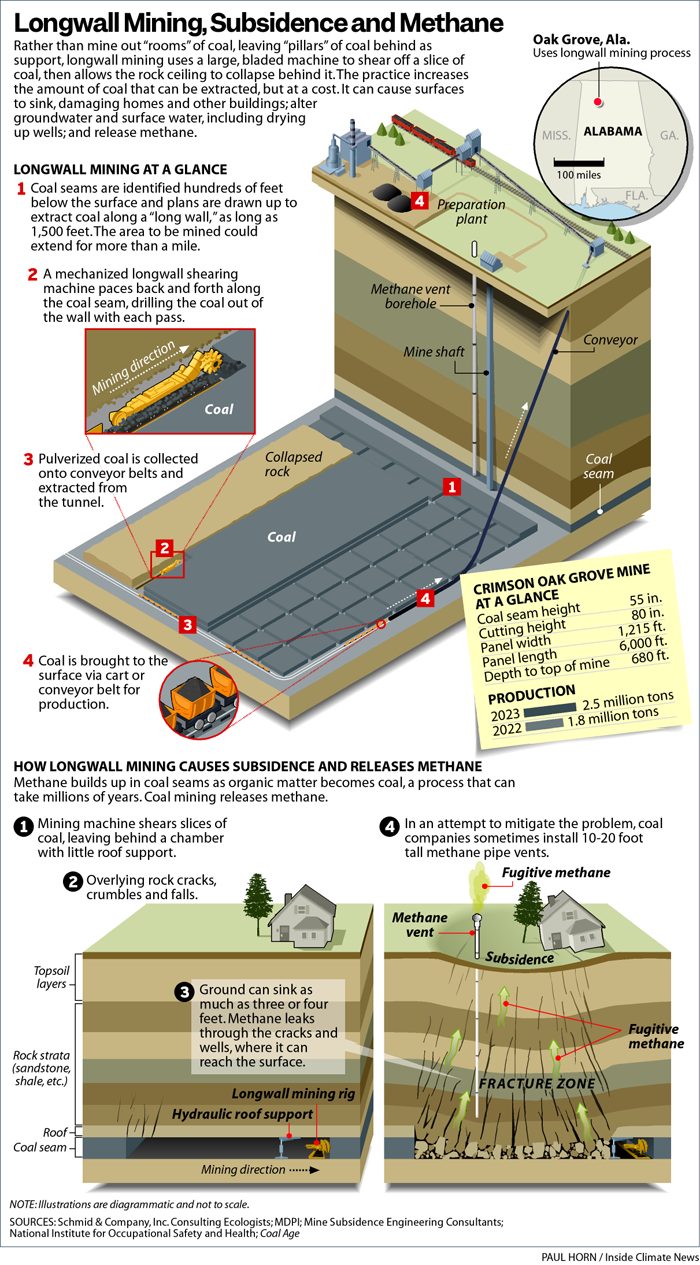
But, he said, the update did not go far enough to stop property damage, nor did it resolve concerns about methane releases.
Instead, Congress set up a system that remains in place today, in which mining companies are obligated to minimize the damage they cause to property owners above the mines and compensate them for losses. This process routinely ends up in legal disagreements between companies and landowners, McGinley said.
And, he added, regulatory agencies do little to ensure the public is treated fairly.
“It’s ridiculous,” McGinley said.
FitzGerald said the underlying problem goes back to a shortcoming of the original 1977 law. He said Congress should never have allowed “undermining where there’s a possibility of surface impacts, of subsidence, within three hundred feet of people’s dwellings.”
Benny Walden, whose father died in Oak Grove Mine, agreed. His home is among more than 100 in the Oak Grove area that are scheduled to be undermined sometime in the next year. In a deep Southern drawl, he said he resents the federal and state governments for their lack of action.
“They need to either completely shut it down or figure out a way to get the coal without destroying what’s on top of the land,” Walden said.
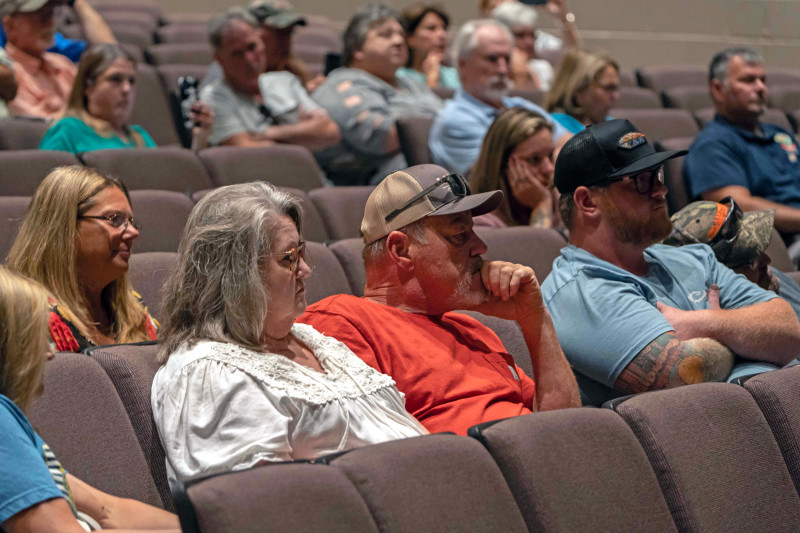
Ashley Burke, a spokeswoman for the National Mining Association, a lobbying group that considers itself “the voice of mining” in the United States, defends the environmental performance of its members, though Crimson Oak Grove Resources is not listed as a member on the association’s website.
“Mitigating impacts as much as possible—and correcting problems if they arise—is not only the law and good business, it’s embedded in the operational values of the modern mining industry,” Burke said.
Language favorable to mining in SMCRA “merely reinforces that the laws are not in existence to prevent or obstruct responsible mining, but to ensure mining is done properly,” Burke said.
At the public meeting following the explosion in Oak Grove, Griffice’s closest neighbor called on everyone, including state and federal regulators, to act more decisively to protect residents from the dangers of longwall mining.
“That night was a terrible, terrible night,” Lisa Lindsay said of the explosion. “It was terribly traumatic. We can make it better so that what happened to Mr. Griffice does not happen to anybody else.”
“They Are Pretending There Is No Problem There”
The 1977 mining law created OSMRE. It also allowed states to adopt their own regulations, as long as those were at least as stringent as the federal rules, and let those states take the primary role of enforcement.
Federal oversight in those states largely comes in the form of conducting reviews of individual regulatory programs.
OSMRE’s 2024 Annual Evaluation Report for the Regulatory and Abandoned Mine Lands Programs in Alabama says it is intended to focus “on the success” of the state “in meeting the [SMCRA] goals for environmental protection and prompt, effective reclamation of lands mined for coal.”
The report covered July 2023 through June 2024, including the period of the Griffice home explosion. But it made no mention of any oversight of Alabama’s regulation of subsidence. Nor did it reference methane migration at any active underground coal mine in the state, including the Oak Grove Mine.
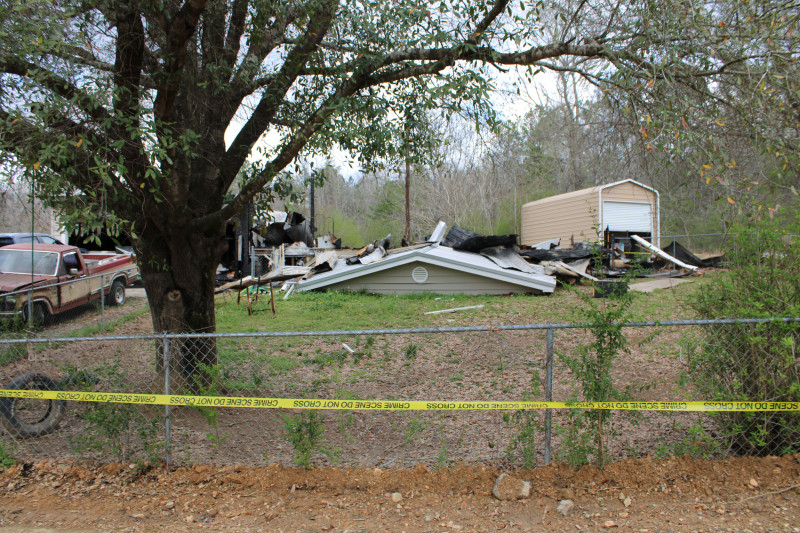
The same positive focus is evident in all of the federal agency’s annual evaluation reports for Alabama mines dating to at least 2019.
“They are pretending there is no problem there,” said Jack Spadaro, a West Virginia-based former top federal mine safety engineer who works as a consultant for coalfield residents, workers and their lawyers. He said the federal agency’s lack of attention to subsidence and methane migration from active mines in Alabama is also evident across the country. As a result, he added, “the citizens are left unprotected.”
In Alabama, that realization has shaken Clara Riley, a nonagenarian with a water well in her home. She said mine officials notified her that the mine will soon expand under her home, and she’s worried about the settling ground and rising methane.
“I live in constant fear,” she told state officials at the August public meeting. “That well is inside my house. … I’m going to get blowed away.”
OSMRE’s “ten-day notice” process requires state agencies to respond within 10 days by either taking “appropriate action” to correct a violation or showing “good cause” for not taking action, according to federal regulations.
Ten-day notices are largely driven by citizen complaints, which are a rare occurrence, partly by design.
In 2020, for example, the Trump administration made it more difficult for citizens to file complaints by requiring them to have more supporting documentation, having them first take their complaints to state agencies and allowing for an informal review process that caused delays.
The Citizens Coal Council, Appalachian Voices and the Sierra Club, all environmental groups, sued the Interior Department in 2021 over those changes. Earlier this year, the Biden administration reversed much of what the Trump administration had done to the policy.
“This rule will help ensure that citizen voices are heard and that their concerns regarding adverse mining impacts are addressed in a timely manner,” Sharon Buccino, OSMRE’s principal deputy director, said in an April press release.
But in June, 17 states including Alabama sued the Interior Department over the new Biden ten-day rule, claiming it exceeded the federal government’s statutory authority.
The mining law gives “extraordinary deference to the States,” they argued, including “exclusive jurisdiction … except in a few specific areas.”
FitzGerald, who has intervened in the still-pending lawsuit on behalf of the Citizens Coal Council and other groups, said the states are wrong to downplay the role of federal oversight.
The 1977 mining law followed a decade of focus on mining, and it was clear by the time President Jimmy Carter signed it that lawmakers had intended for robust citizen participation and for federal authority to step in to ensure state enforcement, he said.
“Congress was concerned the states would revert to their old habits, which was non-enforcement of their state laws,” FitzGerald said.
OSMRE’s Piccoli, in a written statement, said the agency can use the ten-day notice process if it believes that the Alabama Surface Mining Commission or any other state with primary regulatory responsibility is “potentially not properly enforcing SMCRA.”
“A house blew up and somebody died. How do you miss that?”
— Daryl Mashburn, Oak Grove resident
However, according to records the agency released to Inside Climate News in June, its officials had not issued any ten-day notices to the Alabama Surface Mining Commission since at least 2019.
Nationally, OSMRE issued only four notice letters over that five-and-a-half-year period, according to the agency’s Freedom of Information response. Asked for comment, OSMRE’s press office did not respond.
The low number could be attributed in part to a national decline in coal mining, and Pizarchick said some state mining regulatory programs work hard to resolve disputes before they may escalate to federal intervention. But the barriers to citizen complaints may have played a role as well, lawyers who represent coalfield residents said.
The Trump administration’s changes made what was already a difficult process worse, said lawyer Derf Johnson, deputy director of the Montana Environmental Information Center, an environmental group that’s been fighting a longwall mine with serious subsidence issues in that state for years.
Citizens were confronted with “more red tape” and states were given “more discretion,” he said. By having to first bring the complaint to the state, he added, OSMRE created an “‘asking the fox to guard the henhouse’ kind of situation.”
FitzGerald said there’s another issue at play that disadvantages coal communities: A lot of people living atop coal mines don’t know how to navigate the provisions of the federal mining law.
“There hasn’t ever been a lot of outreach to communities on these rights,” FitzGerald said. Because the administrative process is difficult to navigate, he added, some residents get ground down by it and “stop trying, unfortunately.”
The OSMRE website still encourages people to first take their complaints to state regulators, even though that is no longer required.
Lindsay, Griffice’s neighbor, said she filed a complaint with OSMRE within a few months of the blast but never heard back from the agency.
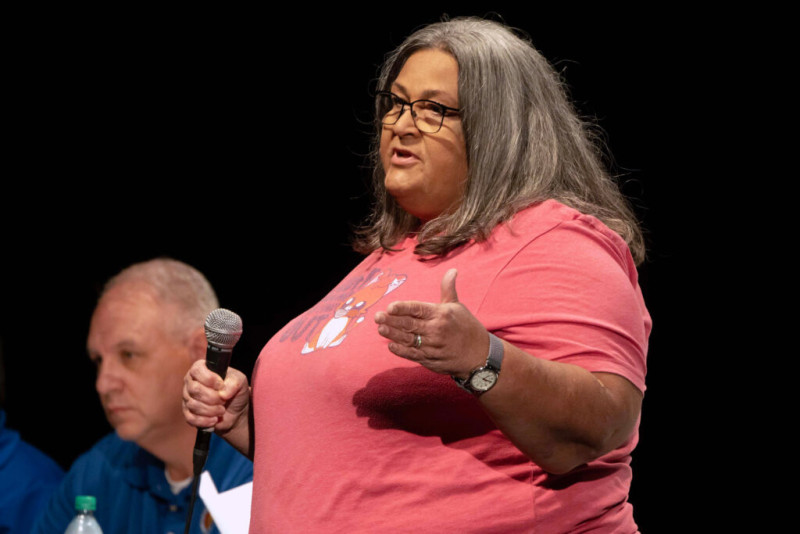
She said she used the agency’s online form to ask that federal officials investigate the circumstances surrounding mining in Oak Grove, including the home explosion and state regulators’ inaction.
“I begged for them to seriously investigate the mine, the ASMC and any other entity involved,” Lindsay said.
Authorities should not wait for people to file a complaint before enforcing the law, said Daryl Mashburn. His home in Oak Grove is scheduled to be undermined in the coming months, something he awaits with trepidation.
“It seems like they don’t know anything unless somebody complains to them directly,” Mashburn said of state and federal regulators. “A house blew up and somebody died. How do you miss that? They just don’t have a clue.”
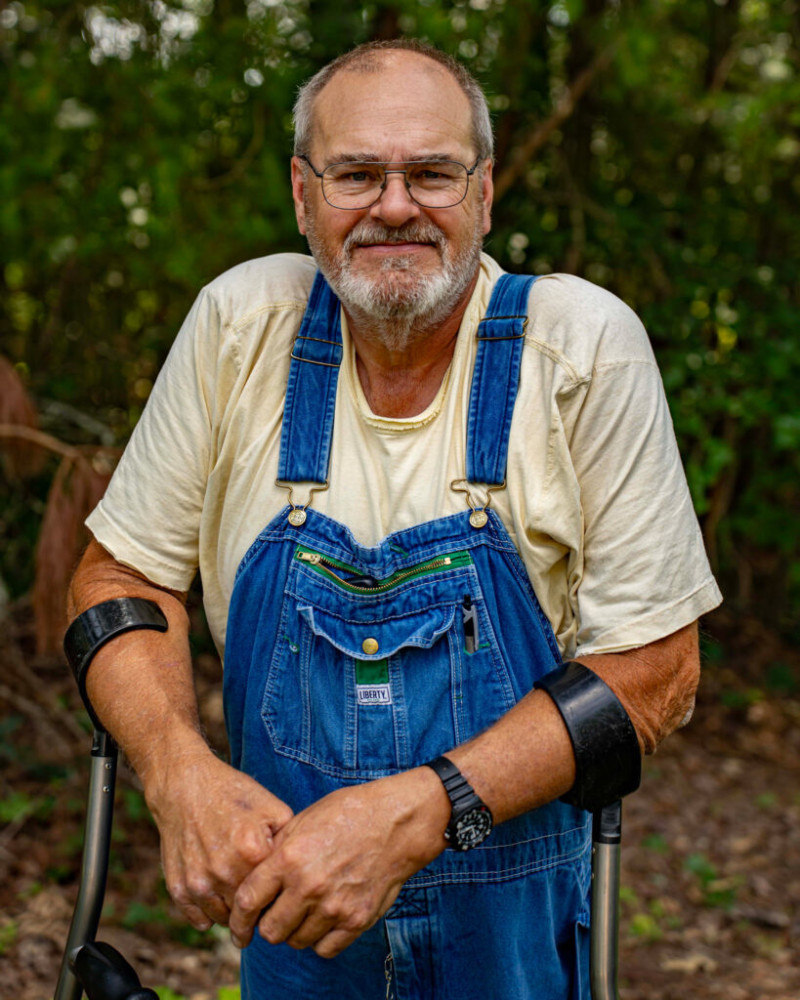
A Disruption of Life and the Environment
In all, 29 longwall coal mines were operating in nine states as of 2022, according to the National Institute for Occupational Safety and Health. That includes nine in West Virginia, four each in Alabama, Illinois and Pennsylvania and one in Montana. Those numbers and geographic distribution are consistent with a survey published earlier this year by a coal industry publication, Coal Age, which concluded that longwall mining accounted for nearly a quarter of overall coal production in 2023.
Whether longwall mining occurs in the mountainous or hilly terrain of Appalachia, under farmers’ fields in Illinois or beneath ranch land in Montana, people who live atop the mines describe similar experiences. The damage to the surface may be different, depending on the local geology, but the underground mining in each region brings with it disruption of life, livelihoods and the environment.
In Taylor County, West Virginia, white plastic pipes extend 15 feet or so up from the ground beside many homes, a spinning vent on top hinting at their role. They’re designed to vent methane from a gassy mine below. In 2022, Spadaro, working with a local attorney, encouraged James and Melissa Nestor, residents of the county, to evacuate their home after gas was found in their water well, nine feet from the back of their house.

“If you had a house and you had children in it, and you were nine feet from a pipe that was venting methane at what could be explosive levels, I don’t think anybody would want to live near that,” Spadaro said.
James Nestor said his family is still renting another home and awaiting the resolution of litigation against a mining company. He would like to return to his home, “but we can’t.”
In Pennsylvania’s Washington County, southwest of Pittsburgh, Amy Erickson recalls when her home and community were undermined in 2007. “I was praying to God every day they closed [the mine] down before they went under my house,” she said. “But that didn’t work out.”
Settling damaged her well and made her floors uneven, she said. Other homes ended up in worse condition; many neighbors accepted financial settlements and left, she said.
“A lot of the community is gone now,” Erickson said. “People just threw up their hands and said, ‘I’m not fighting this.’”
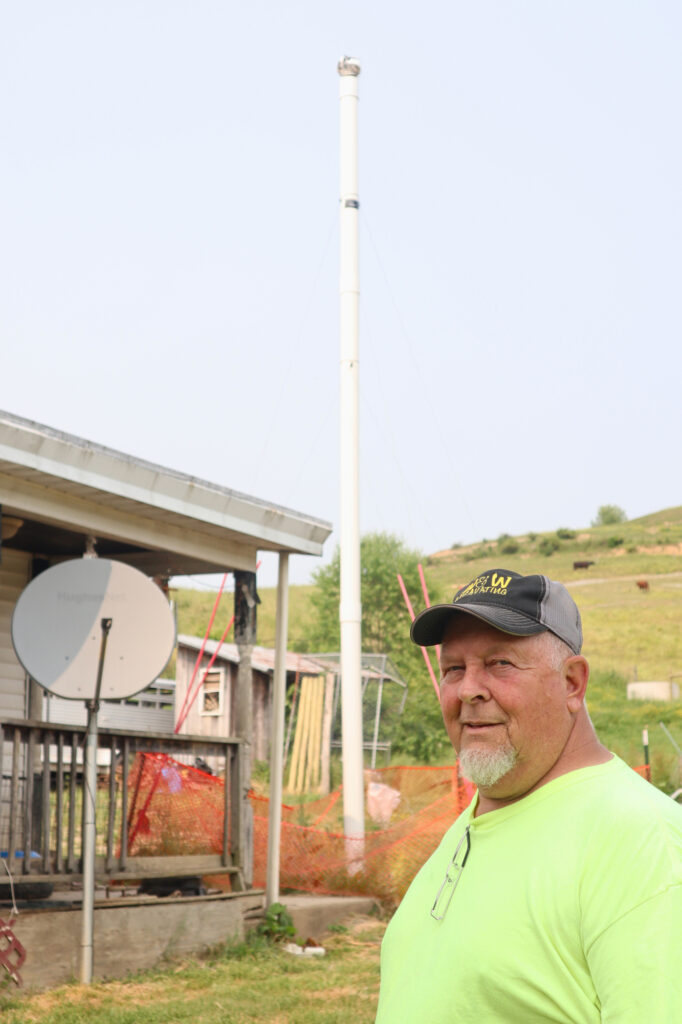
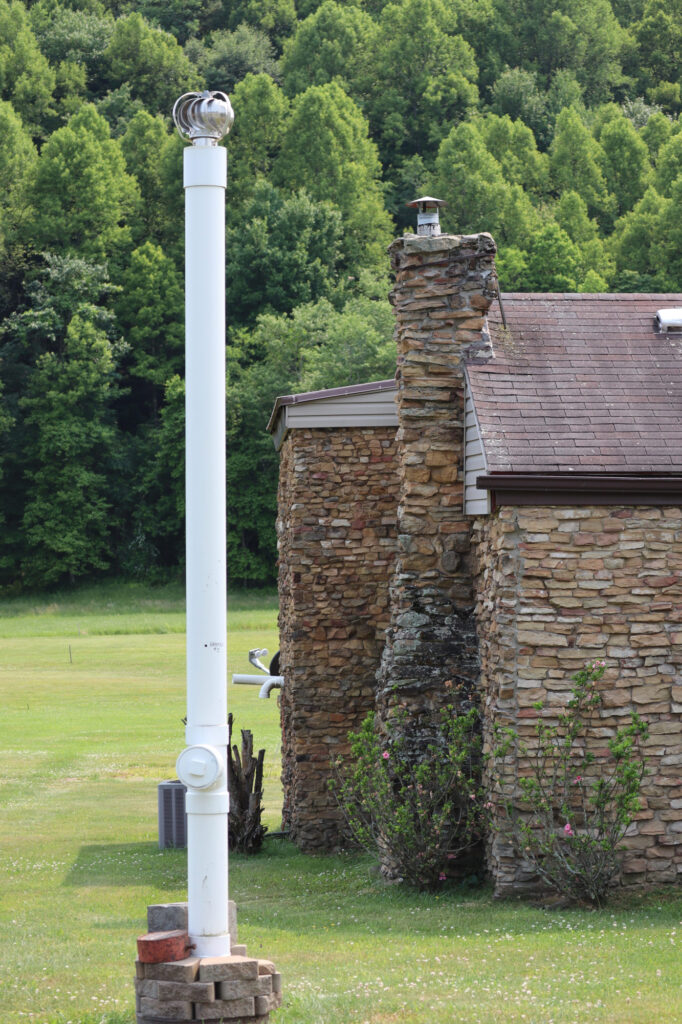
Erickson, the executive director of the Citizens Coal Council, has been a coalfield advocate since 2005, and now works to help other communities grapple with mining impacts.
She said the language in SMCRA is too vague or contradictory, creating what she describes as loopholes.
In Illinois, longwall mining sinks valuable farmland, sometimes causing water to collect on the surface or disappear, and the subsidence can damage farm buildings, said Judy Blumenshine, a longtime volunteer who follows mining issues closely for the Illinois chapter of the Sierra Club.
As a result, landowners find themselves in fights with mine operators to repair the damage, and they wrestle with state and federal regulators to enforce reclamation laws, Blumenshine said.
“We know better than this,” she said, noting coal’s oversized role in contributing to climate change. “We don’t need coal anymore. It’s killing the planet.”
In Montana, ranchers were once told ranching and coal mining could co-exist, but it’s been a fraught relationship.
Ellen Pfister, a retired former ranch owner, has been fighting coal mining since the 1970s and worked to help secure the original passage of the 1977 mining law. She’s active with the Bull Mountain Land Alliance and the Northern Plains Resource Council. The grassroots groups, along with Montana Environmental Information Center and Earthjustice, recently sued to stop an expansion of Bull Mountain Mine, the state’s only underground mine and one of the largest in the country.
Bull Mountain’s longwall operation under her ranch caused cracks and dried up water, she said. One crack, she said, was a quarter-mile long and so deep “you could lose a man’s body in it.” She said the mining company filled in the crack, but the subsidence dried up natural springs that had supported a mile-long, year-round oasis for birds and wildlife in the otherwise arid prairie.
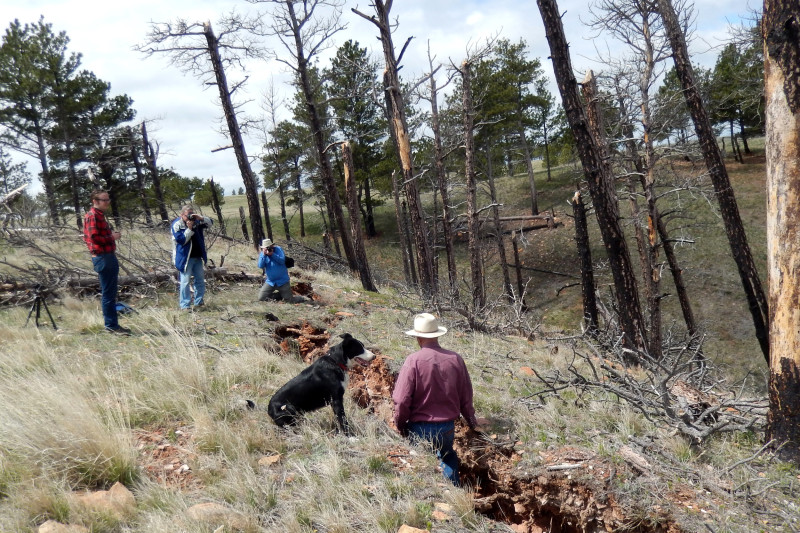
The company operating the mine, Signal Peak Energy, did not respond to messages sent to its website and left on an office voicemail.
Pfister said she sold the ranch in 2019 after it had been in her family since the 1940s. She called SMCRA “a good law,” but added: “Unfortunately, there has been a nearly 50-year effort to pull its teeth.”
“One of the problems is longwall mining itself,” Pfister said. “It doesn’t fit into any category. It does such extensive damage, you almost can’t express it.”
Bipartisan Bill Calls for Subsidence Report
There’s a new bill in Congress that takes up the issue of mine subsidence, but its ambition is limited.
In July, four House members—Nikki Budzinski (D-Ill.), Mike Bost (R-Ill.), Alex Mooney (R-W.V.) and Matt Cartwright (D-Pa.)—filed legislation that would require OSMRE to report on what it’s doing to address the problem of subsidence.
Budzinski drafted the bill in response to subsidence from an abandoned mine that caused a grocery store in Belleville, Illinois, 18 miles southeast of St. Louis, Missouri, to sink. The owners were forced to close it.
“With millions of Americans living in close proximity to abandoned mines—including many of my constituents—it’s critical that we improve our understanding of how to prevent the subsidence of coal mines and make our communities more resilient in the aftermath,” she said in a written statement.
Budzinski’s emphasis on abandoned mines, considered to be those shut down before the passage of the 1977 mining law, has some coalfield advocates worried it gives short shrift to subsidence and the methane migration from active mines.
Erickson said she spoke with a member of Budzinki’s staff, “and I just begged her to … change the wording to add longwall mining specifically. That’s an urgent need. And nobody’s paying attention to it.”
A spokeswoman for Budzinski said the report is meant to include all mine subsidence, but she did not elaborate.
Rahall, the former West Virginia congressman, said he believes the 1992 amendments to SMCRA have helped many coalfield residents across the country recover financial losses from coal mining impacts.
But he said a huge problem remains and will not likely change anytime soon: An uneven playing field where an unsuspecting and ill-equipped public finds itself up against wealthy mining companies that often have the backing of the regulatory agencies.
“It’s been unfortunately a way of life, a method of operation of the industry,” Rahall said. “And with their high-caliber law firms and legal defense and deep pockets, they can create misery for these families.”
About This Story
Perhaps you noticed: This story, like all the news we publish, is free to read. That’s because Inside Climate News is a 501c3 nonprofit organization. We do not charge a subscription fee, lock our news behind a paywall, or clutter our website with ads. We make our news on climate and the environment freely available to you and anyone who wants it.
That’s not all. We also share our news for free with scores of other media organizations around the country. Many of them can’t afford to do environmental journalism of their own. We’ve built bureaus from coast to coast to report local stories, collaborate with local newsrooms and co-publish articles so that this vital work is shared as widely as possible.
Two of us launched ICN in 2007. Six years later we earned a Pulitzer Prize for National Reporting, and now we run the oldest and largest dedicated climate newsroom in the nation. We tell the story in all its complexity. We hold polluters accountable. We expose environmental injustice. We debunk misinformation. We scrutinize solutions and inspire action.
Donations from readers like you fund every aspect of what we do. If you don’t already, will you support our ongoing work, our reporting on the biggest crisis facing our planet, and help us reach even more readers in more places?
Please take a moment to make a tax-deductible donation. Every one of them makes a difference.
Thank you,
David Sassoon
Founder and Publisher
Vernon Loeb
Executive Editor
Share this article
- Republish
Disclaimer: The copyright of this article belongs to the original author. Reposting this article is solely for the purpose of information dissemination and does not constitute any investment advice. If there is any infringement, please contact us immediately. We will make corrections or deletions as necessary. Thank you.








